
Do you have a question about the Agilent Technologies 4395A and is the answer not in the manual?
| Frequency Range | 10 Hz to 500 MHz |
|---|---|
| Resolution Bandwidth | 1 Hz to 1 MHz |
| Interface | GPIB, RS-232 |
| Impedance | 50 ohms |
| Measurement Parameters | S11, S21, S12, S22 |
| Power Requirements | 100 to 240 VAC, 50/60 Hz |
| Dynamic Range | >100 dB (typical) |
| Measurement Types | Network Analysis, Spectrum Analysis |
Updates Return Loss specifications to new values based on frequency.
Updates the L Accuracy specification with new formula based on parameter D.
Overview of the analyzer's capabilities and modes.
Describes the manual's structure and content organization.
Instructions for checking the shipping container and contents for damage.
Details voltage, frequency, and power consumption requirements for operation.
Specifies temperature and humidity conditions for safe operation.
Instructions for installing rack or handle kits for mounting.
Setup procedures for transmission/reflection tests in NA mode.
Setup procedures for impedance measurements in ZA mode.
Configuration steps for 75 ohm measurements in SA mode.
Introduces a guided tour of network analyzer mode operations.
Steps for powering on the instrument and connecting the DUT.
Configuration of analyzer type, active channel, and input.
Setting the center frequency and span for measurements.
Procedure for performing a response calibration.
Using markers to read measurement values.
Introduces a guided tour of spectrum analyzer mode operations.
Introduces a guided tour of impedance analyzer mode.
Required calibrations for network analyzer mode.
Detailed description of the front panel layout and controls.
Details rear panel features and connectors.
Input terminals for receiving signals.
Procedure to select Network, Spectrum, or Impedance Analyzer mode.
Procedures for setting up the trigger system.
Configuring sweep mode, type, and parameters.
Choosing input ports and measurement parameters.
Choosing display formats like LOG MAG, PHASE, SMITH CHART.
Automatically adjusting trace scale and reference.
Adjusting IF, Resolution, and Video Bandwidth.
Procedures for calibration in network analyzer mode.
Procedure for S11 1-port calibration.
Steps for full 2-port calibration.
Steps for connecting the test fixture.
How to interpret displayed traces using markers and search functions.
Searching for multiple peaks on the trace.
Specifying a search range for peaks.
Storing displayed traces into memory.
Procedures for printing display images or values.
Planning, editing, and executing a sweep list.
Enhancing dynamic range in Network Analyzer mode.
Conducting filter tests using limit lines.
Techniques to stabilize traces for accurate measurements.
Measuring transmission characteristics of a filter in NA mode.
Measuring carrier amplitude and frequency.
Evaluating impedance characteristics of a chip capacitor.
Performance specifications for network measurements.
Performance specifications for spectrum measurements.
Amplitude characteristics of the analyzer.
Basic accuracy specifications under specific conditions.
Accuracy for impedance magnitude and phase.
Overview of analyzer modes: network, spectrum, impedance.
How input signals are converted and processed.
Basic principles of network analyzer measurements.
Understanding limit lines and segments.
Information about marker types and functions.
Overview of GPIB interface and operation.
Accuracy enhancement and error sources.
Details of front panel keys and their functions.
Functions and ranges within the Measurement block.
Displays the currently selected display format.
Controls for trace display and memory functions.
Adjusts trace scale and reference values.
Settings for bandwidth and averaging functions.
Calibration functions and procedures.
Functions for controlling sweep parameters.
Settings for power level and DC source.
Controls for trigger modes and events.
Functions for setting center frequency and span.
Functions for marker placement and manipulation.
Functions for searching peaks and defining search criteria.
Utility functions for marker and trace operations.
Controls for instrument state and system settings.
Procedures for saving instrument states and data.
Configuration options for measurement parameters.
Default ranges and settings for various functions.
Lists changes made to the manual.
Information on identifying the instrument's serial number.
Lists error messages alphabetically with their codes.
Lists error messages numerically with their descriptions.


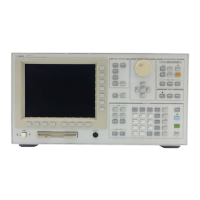
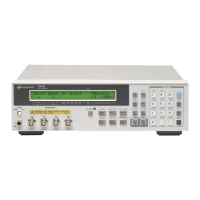
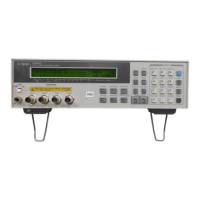
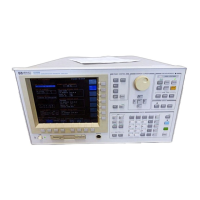


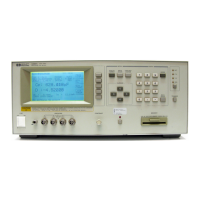
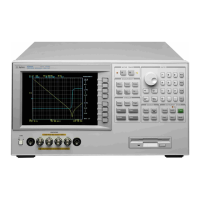
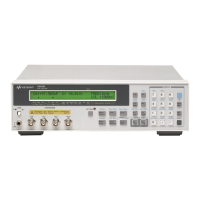

